During the campaign, Donald Trump and Jared Kushner, his son-in-law, discussed how the campaign is underutilizing social media. Close to the end of the discussion, the candidate asked Jared to take over his Facebook initiatives.
Then Jared seeks wisdom:
I called some of my friends from Silicon Valley, some of the best digital marketers in the world, and asked how you scale this stuff…
Dr. Laeeq Khan, the director of Social Media Analytics Lab, Scripps College of Communication at Ohio University, wrote on The Hill:
Trump was the most Googled candidate, and also most mentioned on Twitter and Facebook.
Trump had 4 million more Twitter followers than Clinton.
Clinton’s social media engagement increased somewhat by the third debate, but by then many voters had made up their minds.
Donald Trump, the most unfavorable presidential candidate in U.S. history, used social media to win the presidency.
There’s no limit to what you can achieve with social media.
You need to build an engaged audience to be successful on social media. Without an audience, there’s no way to be successful.
Imagine a Twitter user with 40 followers sharing an update. Who’ll see it?
Nobody will see the update when you take into account the fact that social media posts disappear pretty quickly.
But when a Twitter user with 40,000 active followers share an update, you can be sure that it’ll receive some engagement in the form of retweets, likes, and replies.
So how can you build a massive audience on social media?
Know your audience
Dale Partridge has built a massive following of over 370,000 fans on Facebook.
His fans share one thing in common: Entrepreneurship.
When Partridge shares a post on his Facebook page, it always receives a decent number of likes, shares, and comments from his fans because it resonates with them.
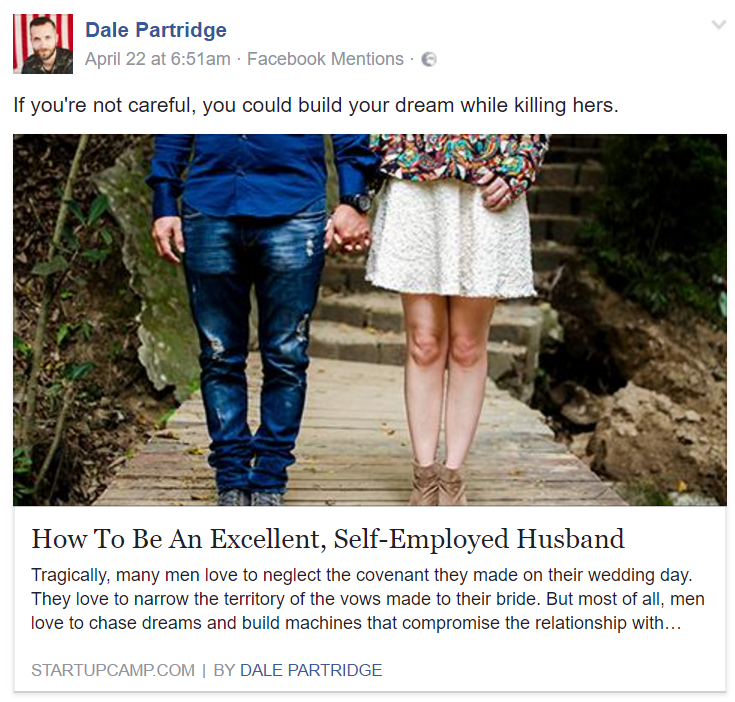
To be successful in social media, you need to know your audience.
Who are they? What do they like to read?
Imagine yourself being invited to give a speech at an event where you know nothing about the attendees. You may deliver a terrible speech. You could also make a great speech. There’s no way to know.
Now, imagine you’re given some information about the audience. You know who they are, what interests them, why they are at the event, etc.
Armed with this information, you can make a speech that will interest your audience.
Take a piece of paper and pen and write out details that help define your audience.
Write:
- Age
- Demographic
- Income level
- Education level
- Interests/hobbies
- Gender
- Relationship/Marital status
- Behavior
- Lifestyle
Determine your audience size
After you’ve recognized your target audience, it’s time to estimate their size. You don’t want to choose an audience that’s too small.
Having a small audience size is not a good thing. It means few people are interested in your social media activities.
I’m a big fan of the Facebook Ads Manager.
After inputting some details about my audience in the Ads Manager, Facebook estimated my potential reach to be 45 million people, which seems good.
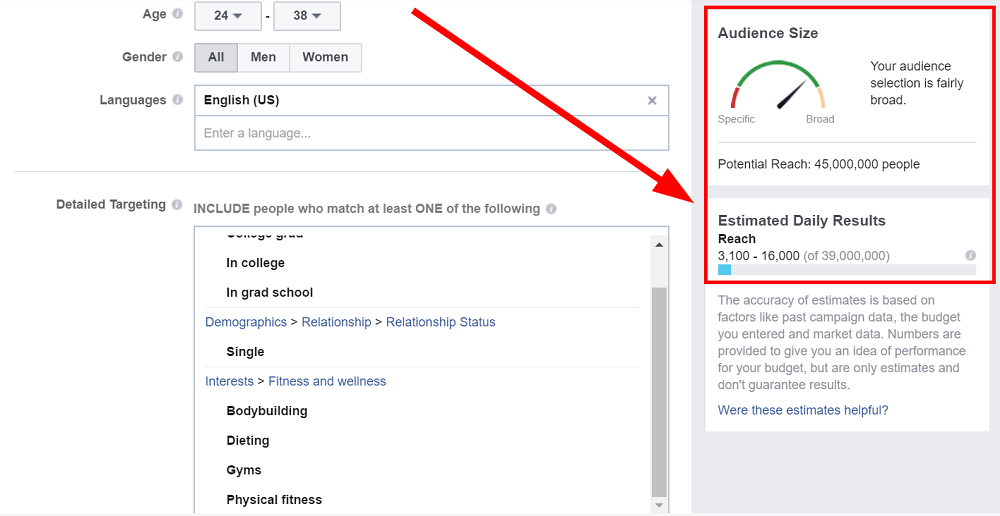
Let’s assume that you’ve defined your audience and know its size, what’s next?
Be aware of the best practices of your chosen social channels
I’m sure you have some social media platforms in mind, where you want to build your audience.
These are the four biggest social networking sites right now:
Each one of these platforms has its unique differences. People have different mindsets and expectations when they are on each site.
Facebook is the most popular social site with over 1.8 billion monthly active users.
Facebook users expect to connect with you on a personal level than on any other social network. The primary reason people sign into their Facebook accounts is to stay connected to their friends and families and know what’s happening in their lives.
All your friends are likely to be on Facebook than any other social site.
Instagram is all about images.
Where are you? What are you doing? What are you looking at? Who are you with?
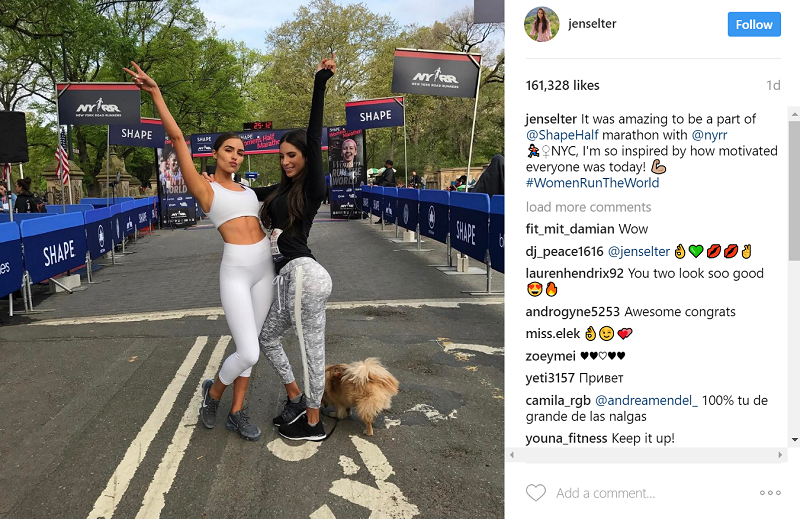
Just like Facebook, Instagram is personal. It’s for sharing those real-life moments.
LinkedIn is different from the rest of the social outlets because it’s specifically designed for businesses and professionals. People only go to LinkedIn to showcase their job experience and professional thoughts.
Twitter is the best place to get trending topics. And if you want to stay in the loop in any industry, just follow the right people on Twitter.
The hashtag (#) was popularized on Twitter.
When you see a trending hashtag on Twitter and decides to use it in your tweet, people from around the world will see it. People who aren’t your followers may retweet, like, and comment on your tweets.
Let’s talk about these four social sites because they are the biggest.
Facebook marketing best practices
Facebook is the perfect place to be if you want to build a massive audience online.
Before you start building your audience on Facebook, you should know its best practices.
Facebook best practices are accepted and the most effective marketing techniques for Facebook.
What are they?
Create a Facebook Page
A Facebook page is a free marketing tool for both individuals and businesses. It costs nothing and less than a few minutes to create a Facebook page.
With a Facebook page, you can contact your fans every day and remind them of your presence.
An active Facebook page helps you establish yourself as an expert in your field. It’s your home on Facebook.
For example, below is Tim Ferriss’ page on Facebook.
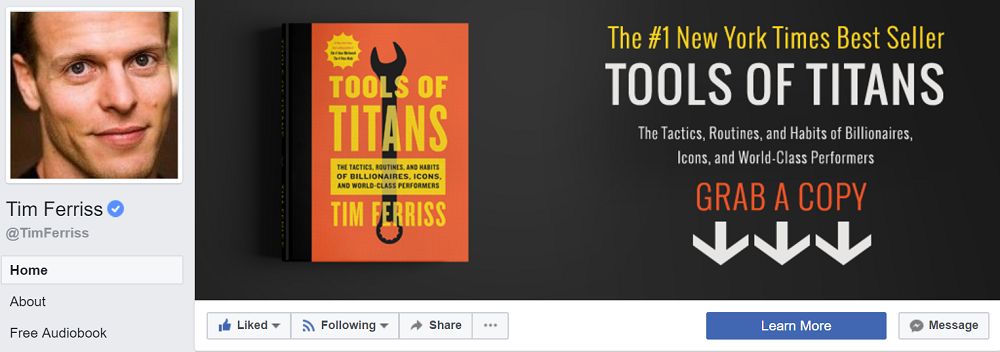
Host contests on Facebook
Contests work well on Facebook. It’s one of the effective ways to get your audience pumped up on Facebook.
Think of products your audience loves, and offer them as prizes to contest winners.
The great thing about contests is that they help you build your audience on the world’s biggest social platform.
Here are some things you can ask fans to do to qualify to win:
- Like a post
- Like your page
- Comment on a post
- Post to your Facebook page
Below is a screenshot of a mall running a contest on Facebook.
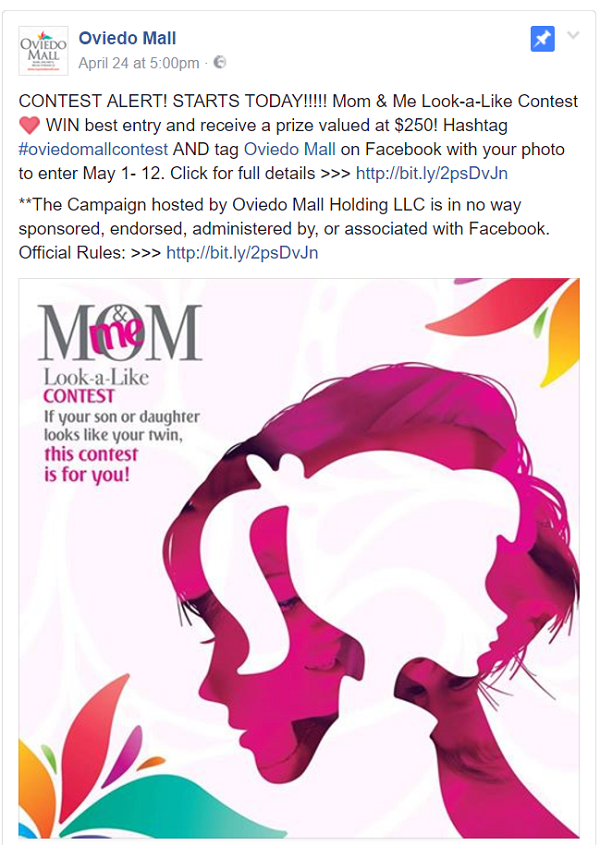
Read Facebook Guidelines before running a contest.
Create a Facebook Group
A Facebook group is like a community where your fans can interact with each other.
What’s the difference between a Facebook page and a Facebook group?
A Facebook Page allows you to create an authentic and public presence on Facebook. Facebook pages are visible by default.
A user only has to follow you to receive the latest updates on their News Feed, so they don’t have to visit your page again to see the most recent posts. They see it automatically because they’re following your page.
A Facebook Group is a community of people who share common interests and express their opinions.
When you create a group, you can either make it public or private.
A private group requires administrator approval for new members to join. Current members can also invite their friends to join.
Creating a Facebook group is a great way to extend your reach and build deeper relationships with your audience.
There will be some individuals in your audience who are experts too. A Facebook group gives them the opportunity to share their tips and help others in the group.
For example, Stuart Walker uses his Niche Hacks Facebook group to communicate with his fans.
Your group can help you develop relationships that’ll generate more sales for your business.
You can also use your Facebook group as a customer service hub for your products and services.
Promote your post with Facebook ads
Facebook marketing expert, Claire Pelletreau recommends you set aside anywhere from $40-$400 per month to dedicate to one thing:
Promoting a handful of the posts you publish on your Facebook page.
Facebook users won’t organically discover your posts, especially if your Facebook page is still new. You need to put your posts in front of them. Facebook advertising is the way to do that.
You should be willing to test your ads with different formats and posts and go with the ones that receive the most likes, comments, and shares on the platform.
Utilizing facebook ads library may also offer insightful analysis of the marketing tactics performed by other companies, giving you the knowledge you need to improve the reach and engagement of your own ad campaigns.
Instagram marketing best practices
Six hundred million people use Instagram monthly. If you want to build an audience who loves images and young, Instagram is an ideal social platform for you.
What are the best practices for marketing on Instagram?
Publish eye candies

If you can post visually-stunning content, you can build an audience on Instagram.
Millions of photos are being uploaded to Instagram each day. If you can make your image stand out, you can succeed.
Your images should be attractive. Show Instagram users something they haven’t seen before.
Geekdom Media uses Instagram to tell their podcast audience the next episode the team is working on.
Post from unique locations
Instagram users can quickly get bored with your posts if you keep publishing photos from the same location. They want to see something new each time you post.
You should be ready to explore the world if you really want to build an audience on Instagram.
Some people go as far as visiting different exciting cities and attractions. That can be very expensive of course. But it’s the price you have to pay to become an influencer on Instagram.
Tell good stories
There should be a story behind every image you share. Write your story in the caption section.
What you write in the caption will help followers understand the real message behind the image. It makes it easy for users to write comments that relate to the image.
Top Yacht Charters uses Instagram to tell interesting stories about available yachts.
Use Hashtags
As I mentioned above, hashtags originated on Twitter. Today, they’ve become part of every social media channel.
Hashtagging is an important activity on Instagram. It increases the reach of your images beyond your followers.
There are a lot of Instagram users who follow hashtags.
For example, some people follow the #coffee hashtag because they like coffee so much.

Posting an attractive and creative image with the #coffee will expose your brand to coffee lovers. Isn’t that a smart thing to do?
LinkedIn marketing best practices
LinkedIn is a site for professionals. It’s a place where you should act and be a professional.
If you want to build an audience who are professionals and entrepreneurs, LinkedIn is the best place to do that.
A lot of professionals have used LinkedIn to build multimillion-dollar businesses.
For example, James Filbird used LinkedIn to build JMF International Trade Group Ltd, to $5 million in revenue largely through his effort on LinkedIn.
Matt Guiver, the founder of Jumpstone International, a firm that helps business owners tackle complex challenges and take strategic actions that move their businesses forward should be an active LinkedIn user.
Create a professional profile
Marketing on LinkedIn starts with your profile.
Do you have a customized profile URL?
Do you have a customized background photo for your LinkedIn profile?
Do you add your work experience on your profile?
Do you show your work samples on LinkedIn?
Are you getting endorsements for your skills on LinkedIn?
Publish on LinkedIn Pulse
Publishing on LinkedIn offers visibility for your name and company.
Unlike Facebook where your post can organically reach 2.6% of your followers, LinkedIn lets you reach 20% of your network.
Twitter marketing best practices
Twitter’s 140-character bite-size updates transformed the world’s access to real-time information and social media.
It wasn’t possible to read the news in 140 characters before Twitter came.
Twitter is more of a place where people share and discover the latest events in the world than where they connect. Succeeding on Twitter is easy when you understand the unique difference of the platform.
As I write this, a huge Google Docs phishing scam is going on. Twitter made me aware of it, so I’m unlikely to fall prey to it if I’m targeted.
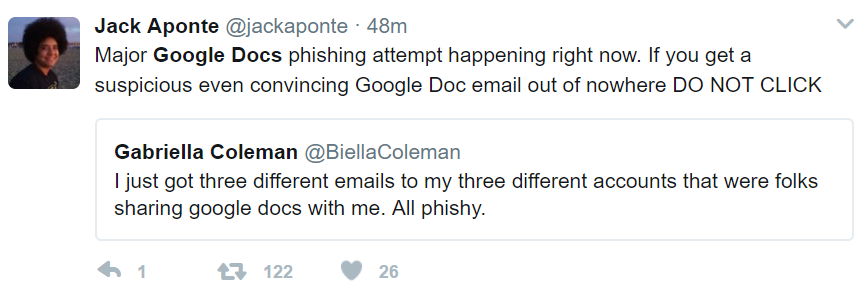
Keep your updates short on Twitter
Unlike most social platforms, where you have all the space and freedom to write long updates, Twitter doesn’t allow you to do that. You have a limit of 140 characters.
To succeed on Twitter, first, you must learn how to write short, educative, interesting, and entertaining updates in 140-characters or even less.
Use visuals in your Tweets
Tweets with images receive 18% more click-throughs, 89% more likes, and 150% more retweets.
Twitter users love images. By sharing more images you’ll become more successful on Twitter.
Use hashtags
Once in awhile, there’s a trending topic or event that you have something valuable to contribute to. For me, that is the best time to use hashtags on Twitter.
Don’t use hashtags in every update you share on Twitter. Or even worse, don’t use unrelated hashtags. In fact, don’t force hashtags into every Tweet you share.
If you believe your Tweet would add value to people who are not your followers, or individuals who are following a particular hashtag, then use it.
Respond to other people’s Tweets
If you want people to share and reply to your Tweets, you should be willing to do the same thing. Give what you want.
Recently, I responded to Rand Fishkin’s Tweet. He did the same to mine.
Give people a strong reason to follow you
There are already enough influencers on the web today.
The articles, videos, images, and podcasts that are being published on the web on a daily basis are so much that web users can’t see 1% of them.
For example, I follow influencers I like on Facebook, Twitter, Medium, Instagram, LinkedIn, YouTube, and even iTunes.
Reading all their content is impossible.
If you want people to add you to their already massive list of influencers whom they respect, you should give them a strong reason to do that.
There are four questions you should answer before you can create a great reason for people who may be interested in you on social media.
- Can people trust you?
- Do you really care about your audience?
- Can you offer your audience a sense of stability?
- Can you offer them hope?
Let’s start with trust.
People trust you because of the achievements you’ve had. If you’re a complete beginner who hasn’t achieved much in your field, you’ll find it difficult to gain people’s trust when you’re just starting out.
The trust in you will increase over time as you continue to achieve results in your field.
For example, a lot of people follow Gary Vaynerchuk because he’s had a lot of success over the years.
You have to deliver on a consistent basis, in a reliable manner and walk the talk before people can begin to trust you.
Next is caring. Do you really care about your audience?
Showing you care is going the extra mile for your audience. For example, responding to messages, social media comments, and shout outs.
Another way of showing you care is delivering the content of high-quality they won’t find elsewhere on the web.
The third question is about stability. Can you offer a sense of stability to your audience?
A lot of your followers want to quit what they are doing right now. Many of them aren’t looking for any magic secrets because they know it doesn’t exist. What they need is a constant reassurance that they are on the right path.
They sometimes lose confidence in themselves. They just need someone to cheer them up. Yes, your fans are like your babies. That’s why they are your followers on social media, and you’re their leader.
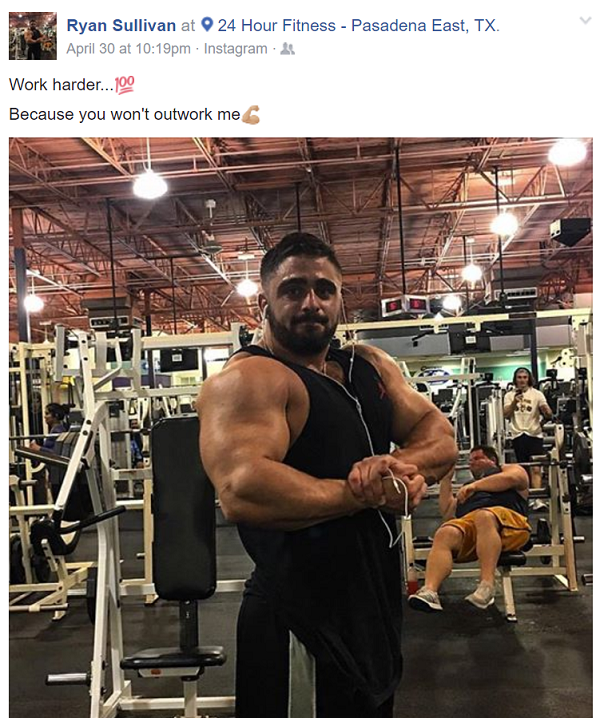
Your audience also needs hope. Perhaps they are going through some tough times now. For them to follow you, they need to be sure that the future will be bright.
They want to feel optimistic each time they see your updates on social media.
You can’t give people all these things the first time they see you on social media. But by continually delivering over a long period of time, you’ll grow your following on social media.
Develop a growth strategy for social media
Everyone who is looking to build an audience on social media searches for strategies that work.
If you’ve been reading from the beginning of this article until this point, you’ve seen the tactics that work for each social platform I listed above.
There are a lot of social media marketing tactics out there.
Every social media tactic won’t work for you. Because it produces results for some people doesn’t mean you’ll have the same success with it.
Peg Fitzpatrick is a social media expert who manages over 11 million followers across various social channels. Below is what she has to say about developing a growth strategy for social media.
Your social strategy is the plan that’s going to make your social media work.
It’s a combination of content creation, content curation, creativity, and organization.
Random acts of social media won’t do a darn thing to help people find you or to be known for a topic area. To build your authority in your niche, you need to create a solid social strategy that will help people find out who you are, what you do, and most importantly how you can help them.
You need a solid growth strategy to win on social media.
Pick one or two strategies that have worked for people in the past. Test them and see if they are working for you. Drop any strategy that isn’t working for you and find another.
You can’t be doing random things and expect success on social media.
Jason Stone built an Instagram following of over 2 million by sharing image quotes about entrepreneurship, motivation, money, and education.

You don’t have to start from scratch. You can learn to use other people’s growth strategies. Perhaps, in a unique way.
How will social media grow your business?
It’s good to know your “why” for building an audience.
The process of building an audience on social media is tough and boring.
Your “why” will keep you determined and laser-focused.
It’s not enough to know what you do or how you do it. You should know why you’re doing it. That’s what makes you continue doing it.
Almost everyone knows how to build an audience on social media. There aren’t any magic secrets to making it work.
Why a lot of people are not building an audience on social media is because they don’t have a reason to. That’s why they aren’t doing it.
People don’t buy what you do. They buy why you do it.
Do you want to use social media to promote your business?
Or, do you want to use social media to become an industry expert and increase your chances of landing a top executive job?
What is your “why” for building an audience on social media?
Tell me using the comment box you’ll find below.
